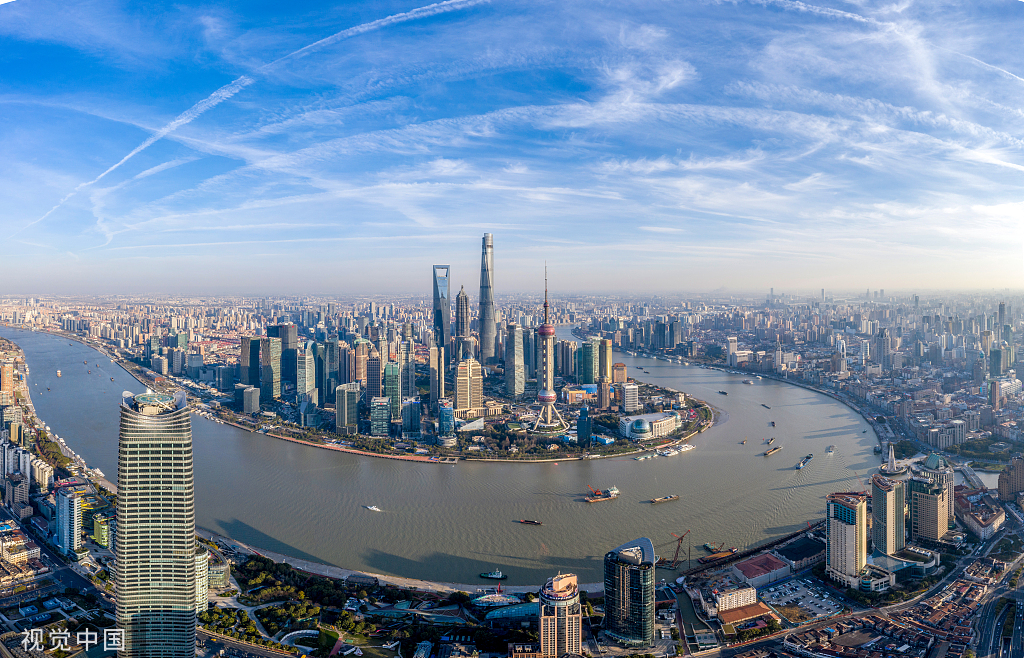Yangtze River Delta region scales up reform and opening-up efforts
- By He Shuquan
 0 Comment(s)
0 Comment(s) Print
Print E-mail China.org.cn, December 10, 2019
E-mail China.org.cn, December 10, 2019

China issued an outline of the integrated regional development of the Yangtze River Delta early in December, injecting vigor to its reform and opening-up efforts. The document maps out targets, requirements and measures to boost the integrated development of the region and build a regional cluster of high-quality development projects. Comprising the municipality of Shanghai as well as Jiangsu, Zhejiang and Anhui provinces, the Yangtze River Delta is China's richest region per capita, and one of China's most economically active, open and innovative regions. Being in the vanguard of China's reform and opening up, it boasts strategic significance and plays a key role in the country's modernization drive.
From the opening-up of Pudong in Shanghai to the Yangtze River Delta integrated regional development, the region boasts several milestones, the most important being the development of the Free Trade Zones in Shanghai, Zhejiang and Jiangsu. This marks a significant strategic plan showing that China has turned from commodity and factor-oriented opening-up to institutional oriented opening up, and transitioned from a model of individual provincial development to regional integrated development.
The integrated development of the Yangtze River Delta is in line with the coordinated development of Beijing, Tianjin and Hebei, the development of the Yangtze River economic belt, and the construction of the Guangdong-Hong Kong-Macao Greater Bay Area. It will scale up efforts of reform and opening-up in the following focus areas:
First, the Yangtze River Delta's regional integrated development focuses on innovation, including technological innovation and institutional innovation. Institutional innovation optimizes the allocation of capital, technology, talents and other elements in a broader space, and injects new momentum into regional development.
Second, innovation in science and technology leads the upgrading of the region's industrial structure. The Yangtze River Delta region will be built into an important source of scientific and technological innovation in China. It is necessary to do the following: thoroughly implement innovation-driven development policy, promote the deep integration of the innovation chain and industry chain, building science and technology innovation centers, and constantly improve its position in the global value chain.
Third, the Yangtze River Delta regional integrated development emphasizes co-governance of the ecological environment. High quality development is inseparable from the improvement of the region's ecological environment. The regional integrated development places the ecological environment and economic development on equal footing. The mechanism for the joint prevention and treatment of environmental pollution has been effectively put in place, and outstanding environmental problems in the region have been effectively dealt with. The Yangtze River Delta aims to become a model for ecological and green integration and development.
Fourth, Shanghai drives the coordinated development of Jiangsu, Zhejiang and Anhui provinces and is in the core position for integrated development. Shanghai will play a leading role in bringing together the inter-regional development of Jiangsu, Zhejiang and Anhui. And these three provinces will make full use of their own advantages, strengthen cross-regional coordination and interaction, improve the level of integration of metropolitan areas, promote the development of urban-rural integration, and build a new pattern of coordinated development with regional interconnection and cooperation.
Fifth, the new section of the Shanghai Pilot Free Trade Zone will take the lead in the new round of reforms and opening up. This new section is listed separately in the outline, which means it is a vital platform for the integration of the Yangtze River Delta region. The China (Shanghai) Pilot Free Trade Zone will focus on the free movement of investment, trade, capital, transportation and human resources. It will promote the liberalization and facilitation of investment and trade, create a special economic functional zone which is in line with international rules and expects to have more international market influence and competitiveness.
Since the opening-up of Pudong in the 1990s, China has kept its commitment to furthering its reform and opening-up. And with the aforesaid efforts, the Yangtze River Delta region is going to reach a new stage of reform and opening-up for regional development as well as the development of China at large.
He Shuquan is a professor from School of Economics, Shanghai University.
Opinion articles reflect the views of their authors only, not necessarily those of China.org.cn.
If you would like to contribute, please contact us at opinion@china.org.cn.






Go to Forum >>0 Comment(s)